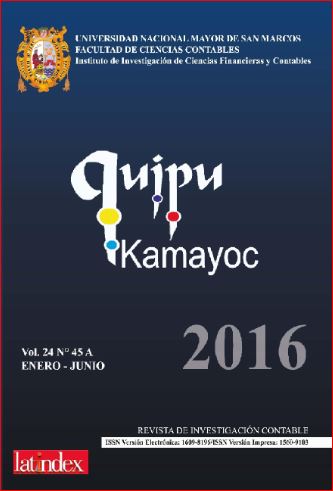THE CONSUMER CREDIT BOOM IN PERU
DOI:
https://doi.org/10.15381/quipu.v24i45.12455Keywords:
Consumer loans Boom in the Peru, consumer credits market, multiple banking consumer loans, municipal boxes consumer loans, consumer loans concentration.Abstract
The Peruvian financial market liberalization starting from 1991 facilitated in the subsequent years, 1993- 1997, the operation of new banks and financial companies to mainly meet the demand for consumer loans and of micro-enterprises. These banks expanded massively in a short time in low-income sectors. However, the size of the market and high costs for micro lending, even with high interest rates, moderated the expectations of more competition. Since 1998, ten newly arrived companies left from the local market due to bankruptcy, retreated to their country of origin or merged. The number of banks remained as before, but with a growing demand for consumer loans. On the demand side, the properties given in warranty by the defaulted borrowers were embargoed and auctioned, which reveals partially that the problem of low-income sectors is not liquidity but economic. To analyze the trends of consumer loans, bibliographical references are cited and commented. On that base, the objective of this article was defined, and identified the ranking of consumer loans of the companies offering them. Banks concentrate more than 75% of the consumer credit market, with increasing trend; the others companies in the financial system continue growing in absolute terms, but in relative terms they lose their participation.
Downloads
Downloads
Published
Issue
Section
License
Copyright (c) 2016 Esteban Marino Avelino Sánchez, Jaime Bernabé Torres Ramírez, Richard Tipe Torvisco

This work is licensed under a Creative Commons Attribution-NonCommercial-ShareAlike 4.0 International License.
AUTHORS RETAIN THEIR RIGHTS:
a. Authors retain their trade mark rights and patent, and also on any process or procedure described in the article.
b. Authors retain their right to share, copy, distribute, perform and publicly communicate their article (eg, to place their article in an institutional repository or publish it in a book), with an acknowledgment of its initial publication in Quipukamayoc .
c. Authors retain theirs right to make a subsequent publication of their work, to use the article or any part thereof (eg a compilation of his papers, lecture notes, thesis, or a book), always indicating the source of publication (the originator of the work, journal, volume, number and date).





























